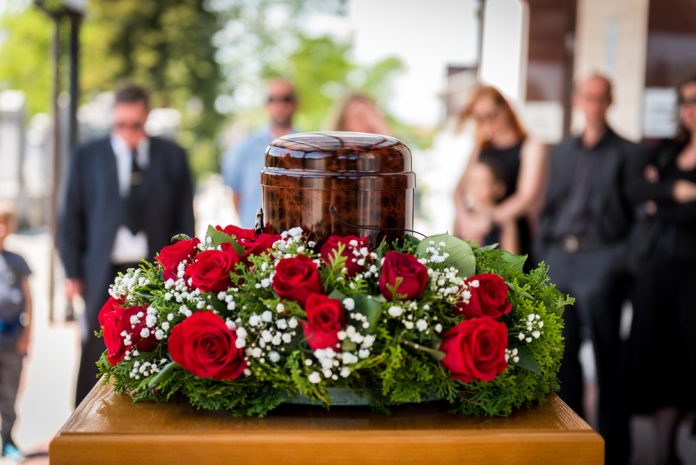
CF Pte Ltd is a family-based business established in the 1990s. Over the years, the company has built up a reputation in the local funeral services industry through its commitment to providing professional funeral services to bereaved families at a reasonable and transparent price. Today, CF has expanded and offered one-stop funeral services, operating in-house funeral parlors, embalming facilities, and a fleet of hearses. They are also supported by a team of dedicated full-time funeral services professionals who attend to customers and take care of logistics management.
Business Challenges
It is a trend for the funeral services industry to not attract and retain local talents in hiring exercises due to stigma with the nature of the business. CF also faces the same challenge; getting new hires on board with the company can be an uphill job. And for successful hiring that has taken place and has undergone training with us, retaining these skilled staff who are already well-trained in their work area can be challenging.
CF decided to engage our consultancy services to help them diagnose, recommend, and design viable solutions to redesign some critical job roles to strengthen the business capabilities for sustainable growth.
Design Thinking (DT) Strategy used in this project:
Conventionally, DT’s main processes are “Empathise, define, ideate, prototype, testing and implementing” with some degree of iterations between stages. We adopted our simplified IDI version of design thinking in parts for the CF project. The following is a graphical presentation of our DT model.
An abridged DT Framework

In this DT model, there are overlapping and iterative processes that share similarities with other DT models, as shown in the following table:
| Our version | Similar characteristics of the key and notable process |
| 01 Insights | Empathise, Needs Definition, Framing, and Reframing |
| 02 Design | Ideate, Prototyping, Divergent and Convergent |
| 03 Implement | Testing, implementing, reviewing, and enhancing |
Establishing CF’s organizational direction, needs, and project objectives, engaging the target stakeholders, and identifying the desired business deliverables and outcomes were the top agenda during our first visits with their top management.
The iterative three phases approach scaffolds how we engage CF on this project journey.
01 Insights Phase
In this phase, we adopted a blend of DT methods and related business tools. They are:
- People-centric Strategic and Business Mapping (akin to Business Model Canvas) to uncover insights into CF’s business goals and organizational needs.
- Customer Journey Mapping (CJM) (existing operations and processes)
- Needs Analysis on Jobs & Skills
These methods/tools are carried out in a focus group with CF’s key decision-makers and functional lead stakeholders. Brainstorming, clustering, and prioritization techniques were used to distill the insights for needs analysis relating to jobs and skillsets critical for CF’s business operations.
Throughout this phase of gathering insights for business fit, job fit, and employee fit was an underlying driver and premise for this job redesign project.
Scoping and gathering information were also carried out via surveys and one-on-one interview sessions to validate the insights derived.
The following is an example of “People-centric Strategic and Business Mapping” for illustrative purposes.

CF has identified and wanted to redesign three job roles from the actual CF’s business mapping: Service Operations Director, Funeral Advisor and Customer Care Officer, where more than 20 percent of employees are likely to be impacted in those roles. These job roles form the core of operations that drives business revenue and growth.
It was critical to examine those roles by taking the customer’s perspective on how they would impact the operations using customer journey mapping.

In CF’s customer journey mapping, the five journey stages were captured as “awareness, consideration, decision, operations, post-sales.”
Touchpoints such as email, print catalogues, walk-ins, online forms, contracts, and others serve as points of reference for connecting contact points and moments between different mediums, stakeholders, and work processes (including customer jobs).
The journey map also reflects human-centric data on the varied emotions throughout customers’ experience with CF and how they behave or respond as they progress through each stage.
The barriers and challenges the customers face are vital inputs on what could be improved, reduced, or eliminated during their journey with CF. These insights are gathered to provide rich and quality information that can be synthesized to redesign the identified job roles.
Another aspect captured in the journey map was to turn those opportunity areas into actionable recommendations for the next design phase of the project. Those captured attributes and work behaviors desired by customers help shape the qualities needed for the job roles that change the customers’ experience.
The last segment for this phase was to converge and synthesize the insights that build the context, framing, and foundational information needed to redesign those job roles.
02 Design Phase
In this phase, we adopted another blend of DT methods and related business tools. They are:
- Personas for the three job roles
- Redesign Job Role Profiles (referencing some information from ONET on funeral service roles)
- Customer Journey Mapping (IDEAL operations and processes)
These methods/tools are carried out in a focus group setting with CF’s key decision-makers, HR partners, and those impacted jobholders and the reporting officers. Brainstorming, clustering, prioritization, and synthesis techniques were used to diverge and converge job information and value gathered from multiple sources (CF’s stakeholders, industry benchmarks, and subject matter experts).
The following persona template we used is based on eight dimensions of winning behaviours.

The three personas were developed to provide essential behavior dimensions as inputs for redesigning their job profiles.
The next step was to develop the three job role profiles using the templated fields: job title, job description, responsibilities, critical tasks, job holder characteristics, job skills, experience, and education / professional qualifications. Job task analysis was carried out to establish job roles’ contribution to business value, outcomes, and performance. The following is an illustrated example of the redesigned job role profile is a Funeral Advisor from CF.

Customer Journey Mapping (Desired customer service experience)
Another essential process required was a revisit with the group of impacted employees and stakeholders to conduct another round of customer journey mapping sessions. In this CJM session, using the personas developed as reference points, the objective was to capture all the critical segment insights (from service touchpoints, customer emotions, customer jobs, barriers, and opportunity areas) in the ‘ideal’ service experience case for the five journey stages.
03 Implement Phase
In this phase, we adopted another blend of DT methods and related learning & development strategies. They are:
- Provide Job Role and Skills Transition Map
- Implement Coaching for Employee and Reporting Officer for the transition journey from current to redesign job role.
- Establish a Job Role Support Network to enable more targeted support from key stakeholders such as immediate co-workers, supervisors, HR, and managers.
These methods/strategies are carried out in a focus group or one-on-one check-in setting with CF’s functional leads, HR partners, impacted employees, and reporting officers.
In rolling out CF’s three redesigned job roles, communication, engagement, adoption, and coaching is critical to making the transition smooth and sustainable. We roped in all the impacted stakeholders to design the journey for the job holder’s transition to the new job role.
The following exhibit is an example of a job role and skills transition map for a Funeral Advisor role being redesigned.

The job role transition map provides a practical blueprint for the impacted stakeholders and job holders to implement operational and skills development activities. It also provides pointers to various considerations of the job holder’s intrinsic factors and the performance support systems for making the transition journey more frictionless. The primary objective is to shorten the adoption time for the job holder to reach optimal performance in the new redesigned role and allow early feedback for refining any issues relating to the job.
04 Impact of the Job Roles Redesigned
The existing job roles of Funeral Advisors and Customer Care Officers were redesigned by integrating value-adding tasks and goals. As for Funeral Service Executive, expanding the new scope of work entails relevant competencies and work skills; and greater alignment to support business outcomes and workforce needs (aspirations). The structured transition helped the impacted employees to adapt and grow in the redesigned job role, effectively enabling greater work synergies in CF’s operations.
CF pledged and committed all accessible resources to support the job redesign project and implementation. Despite their hectic schedules, the business owners have dedicated time for the consultation sessions and scheduled employees for interviews and discussions. They provided us with full access to all relevant documents for the job redesign (e.g., job descriptions, work instructions, SOP, High-level business strategy, etc.).
The redesigned jobs played a crucial role in achieving a more significant market share and higher revenue and contributing to the company’s plan for continuously upgrading the services and product offerings.
Key outcomes achieved from the redesigned job role
- Impacted employee’s job size enlarged and/or job value increased
- Jobs have been redesigned to better support business transformation in the organization
- Impacted employees’ capabilities have been enhanced to improve their career development opportunities
- Job role transition is properly implemented with targeted workplace learning plans, learning roadmaps, and coaching sessions for stakeholders (HR, RO, impacted employees) in the transition support system.
Conclusion
Indeed, our work with CF is not done yet; they continue to embark on enterprise transformation efforts. We are continuing the partnership with them to ensure the redesigned job roles generate greater value for the CF and improve the job attractiveness for talent attraction and retention.
In this project, design thinking principles, methods, and tools are interweaved across all three phases of our simplified IDI model. There are tangible outcomes from those processes as described, and the journey is just starting to get better. We are still experimenting and innovating more optimal DT practices with other clients in other projects.
References:
- PSG-JR BJE approach and techniques, CET Global Pte Ltd
- Osterwalder, A. and Pigneur, Yves, (2010). Business Model Generation: A Handbook for Visionaries, Game Changers, and Challengers. NJ: Wiley.
- https://www.trainingjournal.com/articles/features/strategies-enabling-effective-job-role-transition
- https://www.trainingjournal.com/articles/features/how-design-business-board-game-employee-engagement




